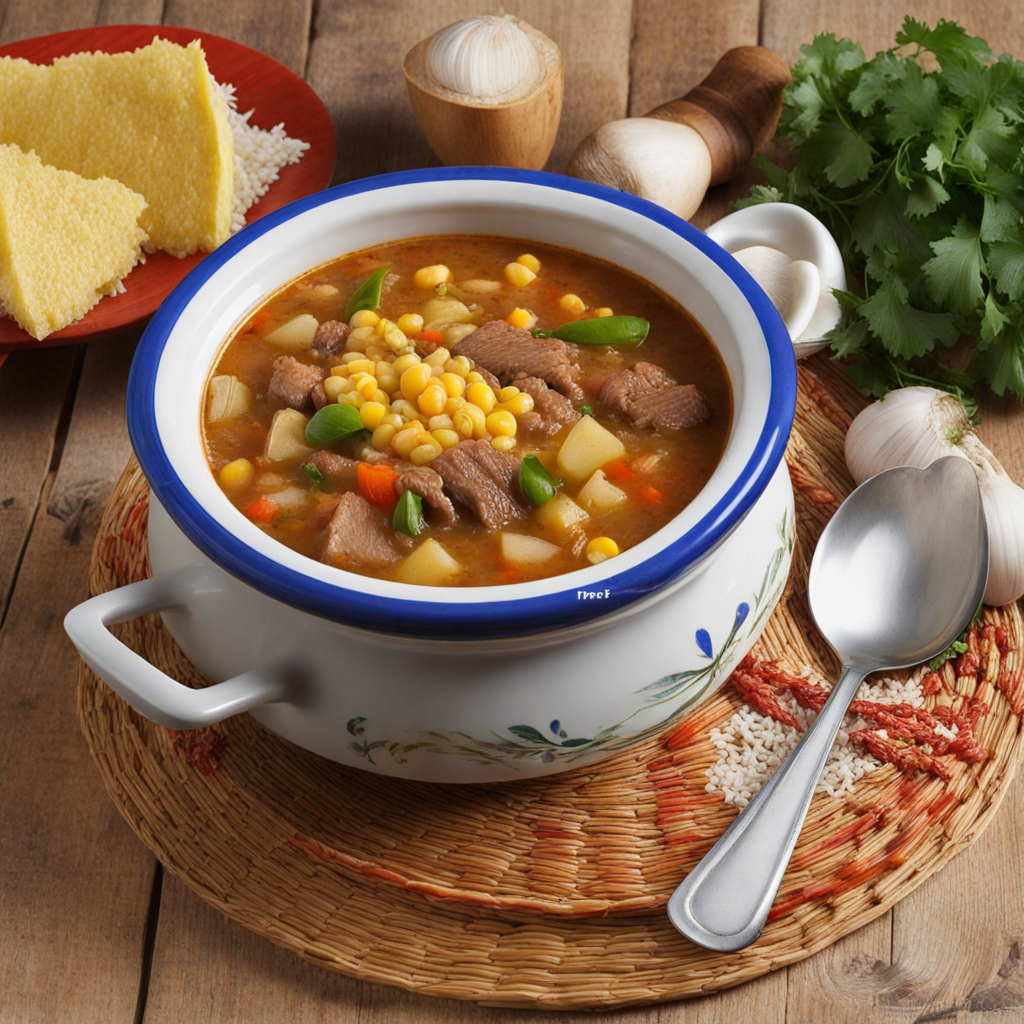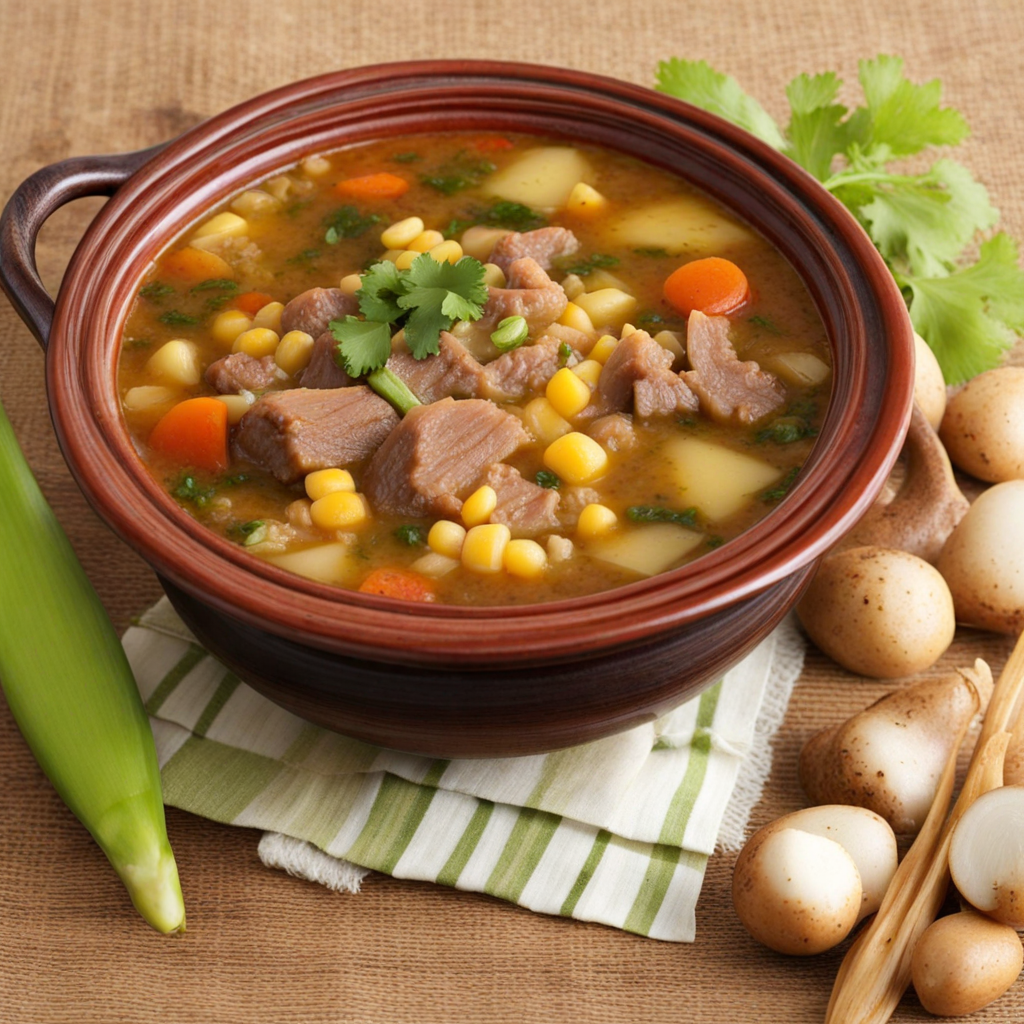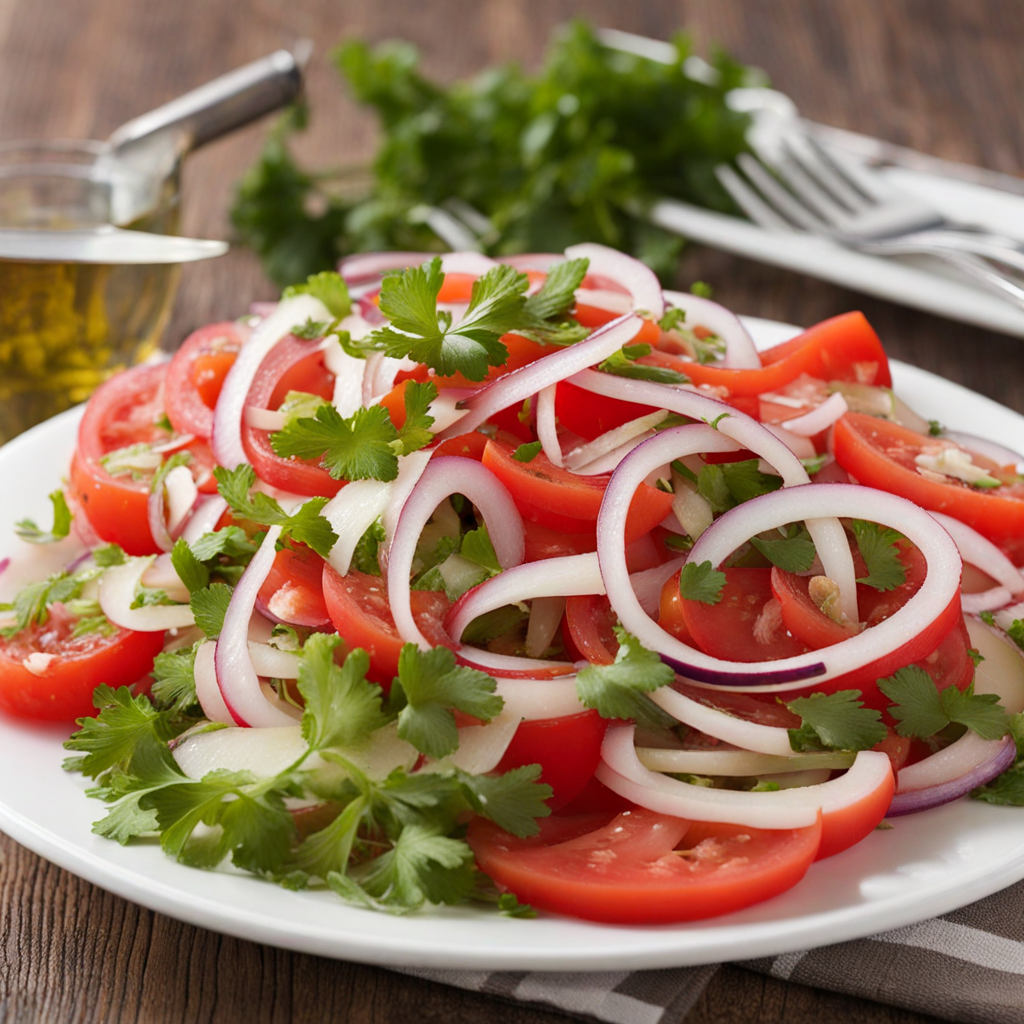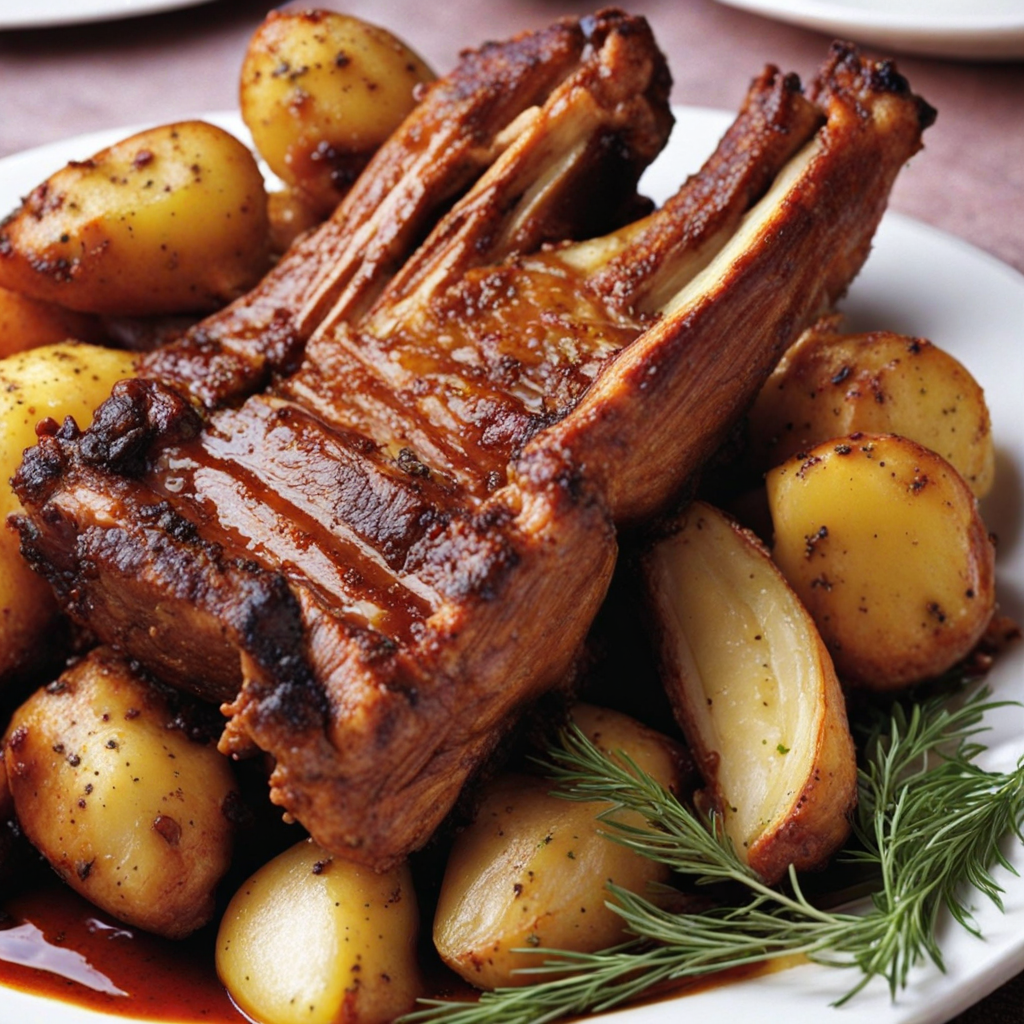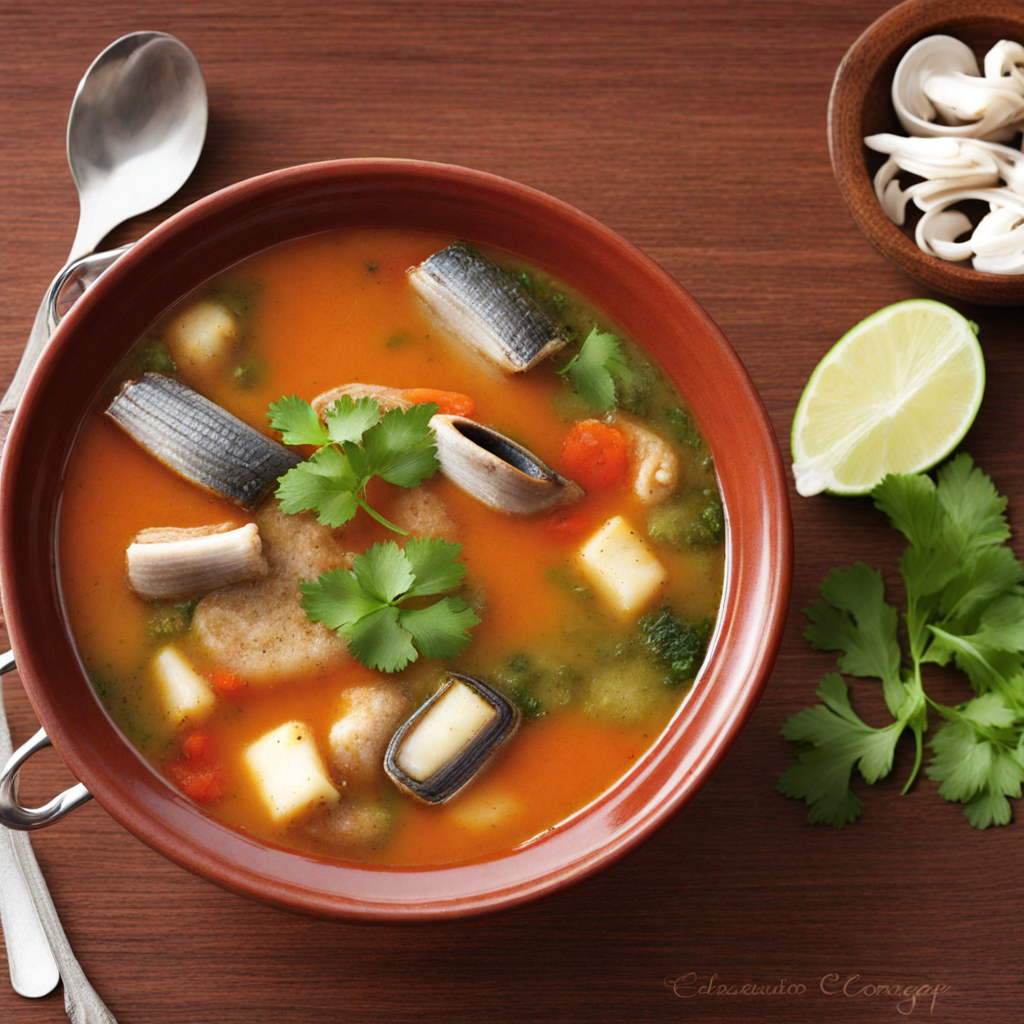Cazuela
Cazuela is a traditional Chilean dish that embodies the warmth and heartiness of home-cooked meals. At its core, this rustic stew features a rich broth, typically made from beef, chicken, or pork, simmered with a medley of fresh vegetables. The vibrant colors of carrots, potatoes, and pumpkin bring the dish to life, while fresh herbs like cilantro and a hint of garlic infuse it with aromatic depth. Each ingredient melds together beautifully, creating a comforting and nourishing experience that reflects the essence of Chilean cuisine. One of the most delightful aspects of cazuela is its versatility. Each family may have its own variation, incorporating seasonal ingredients or regional specialties. For instance, some may add corn or peas for sweetness, while others might include spicy peppers for an extra kick. The result is a dish that not only warms the body but also tells a story of Chile's diverse agricultural bounty and culinary traditions. The balance of flavors—from the savory protein to the subtle sweetness of the vegetables—makes every spoonful a delightful exploration of taste. Typically served in a large bowl, cazuela is often accompanied by a side of rice or crusty bread, making it a satisfying meal for any occasion. As you savor this dish, you'll find yourself enveloped in its comforting embrace, perfect for cold winter nights or gatherings with loved ones. Whether enjoyed at a cozy family dinner or in a bustling Chilean market, cazuela is a celebration of flavor and community that invites you to discover the rich tapestry of Chilean gastronomy.
How It Became This Dish
The Cazuela: A Culinary Journey through Chile's History #### Origins Cazuela, a traditional Chilean dish, is more than just a meal; it’s a symbol of the country’s rich agricultural landscape and a testament to its cultural heritage. The name "cazuela" derives from the Spanish word for "stew pot," and although stews exist in various forms across Latin America and beyond, the Chilean cazuela is uniquely reflective of the country’s ingredients, climate, and culinary traditions. The dish has indigenous roots, drawing upon the practices of Chile’s pre-Columbian peoples who relied heavily on local ingredients. The Mapuche, for instance, utilized a variety of native plants and animals in their cooking, which laid the groundwork for modern cazuela. As Spanish colonizers arrived in the 16th century, they brought with them new ingredients such as beef, chicken, and various herbs, which began to meld with indigenous practices. This fusion marked the early evolution of cazuela, making it a dish that embodies the blending of cultures that characterize Chilean history. #### Cultural Significance Cazuela holds a special place in Chilean culture, often associated with family gatherings, communal meals, and celebrations. It’s a dish that speaks of home, comfort, and tradition. Chileans typically prepare cazuela during colder months, offering warmth and nourishment in a single pot. It’s not just a meal; it’s an experience that brings people together around the table, fostering connections among family and friends. In Chilean households, cazuela is often served during significant events, such as holidays and birthdays, making it a staple of both everyday life and special occasions. It reflects a deep sense of national identity and pride, as families often pass down their own versions of the recipe through generations. Each family adds its unique touch, whether it's a specific combination of vegetables or a secret ingredient, ensuring that every cazuela tells a story. #### Ingredients and Preparation Traditionally, cazuela is a hearty stew made with meat (commonly chicken or beef), potatoes, corn, carrots, and a variety of herbs. The base is typically a rich broth made from simmering the meat with water, salt, and spices, which infuses the vegetables with flavor. The dish is often finished with fresh cilantro or parsley, adding brightness and a burst of color. The preparation of cazuela is relatively straightforward but varies widely depending on regional ingredients and personal preferences. In northern Chile, for example, you might find cazuela incorporating more arid climate vegetables, such as squash or sweet potatoes, while in the southern regions, the dish might include local greens and tubers that thrive in the cooler climate. This adaptability reflects not only the local agricultural practices but also the cultural influences that shape Chilean cuisine. #### Evolution Over Time As Chilean society evolved, so did its cuisine, including cazuela. The 19th century marked a period of significant change, with the influence of European immigrants introducing new flavors and techniques. Italian, German, and French settlers brought their culinary traditions, further enriching the Chilean palate. These influences can be seen in modern cazuela variations that incorporate different spices, cooking methods, or even ingredients like pasta. The 20th century brought about further changes, especially with the rise of globalization. As Chilean cuisine gained international recognition, chefs began to experiment with traditional dishes, reinterpreting cazuela for contemporary tastes while still honoring its roots. The dish has transitioned from being a home-cooked staple to appearing in high-end restaurants, where chefs showcase their culinary creativity by introducing innovative elements while respecting traditional flavors. In recent years, the emphasis on local, sustainable, and organic ingredients has led to a renaissance of traditional dishes. Chefs and home cooks alike have begun to focus on sourcing ingredients from local farmers’ markets, reviving the importance of seasonality in cooking. This resurgence echoes the ethos of the original cazuela, which was born from the necessities of local agriculture. #### Contemporary Cazuela Today, cazuela remains a beloved dish in Chile, celebrated for its versatility and comfort. While the classic recipe holds strong, variations abound, reflecting the ongoing dialogue between tradition and modernity. Vegetarians and vegans have also embraced the essence of cazuela, creating plant-based versions that still capture the spirit of the dish through the use of legumes, seasonal vegetables, and vegetable broths. The cultural significance of cazuela continues to thrive, with festivals and culinary events dedicated to celebrating traditional Chilean cuisine. These gatherings provide opportunities for chefs to showcase their interpretations of cazuela, highlighting the dish’s adaptability and the rich tapestry of flavors that Chilean agriculture has to offer. #### Conclusion Cazuela is more than just a stew; it is a culinary narrative woven into the fabric of Chilean life. Its origins reflect a rich history of cultural exchange, and its evolution mirrors the changing dynamics of society. As Chileans continue to honor the past while embracing the present, cazuela stands as a testament to the resilience and creativity of a nation deeply rooted in its agricultural heritage. In every bowl of cazuela, there lies a history of the land, a connection to family, and a celebration of community. It is a reminder that food is not just sustenance, but a vehicle for storytelling, culture, and identity—a delicious embodiment of what it means to be Chilean.
You may like
Discover local flavors from Chile


